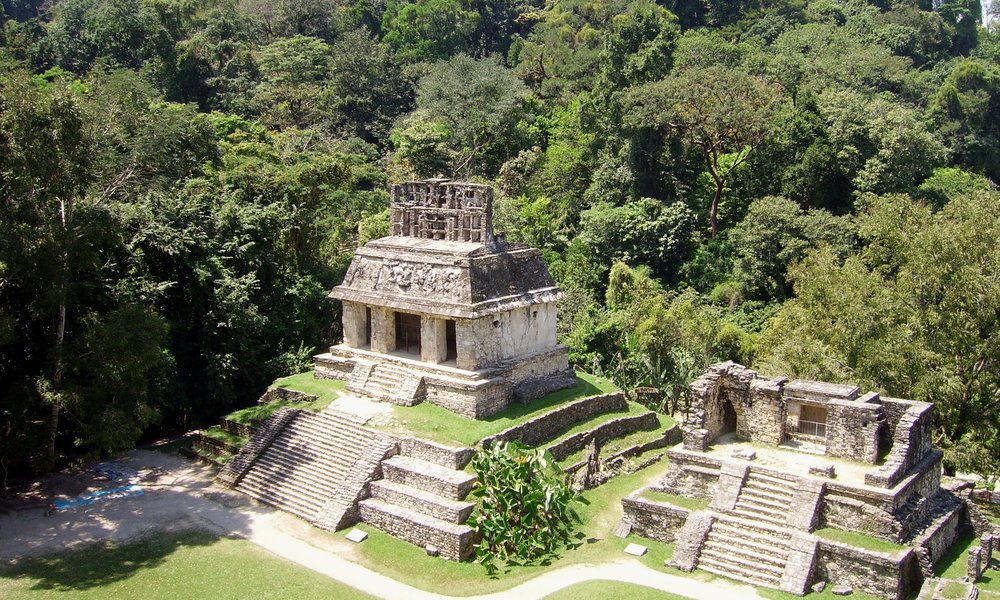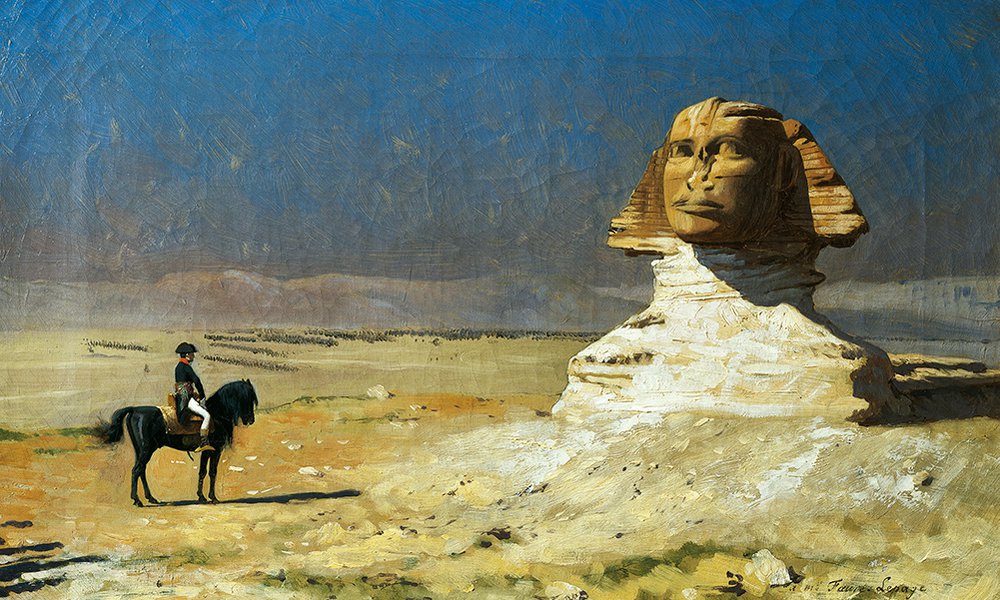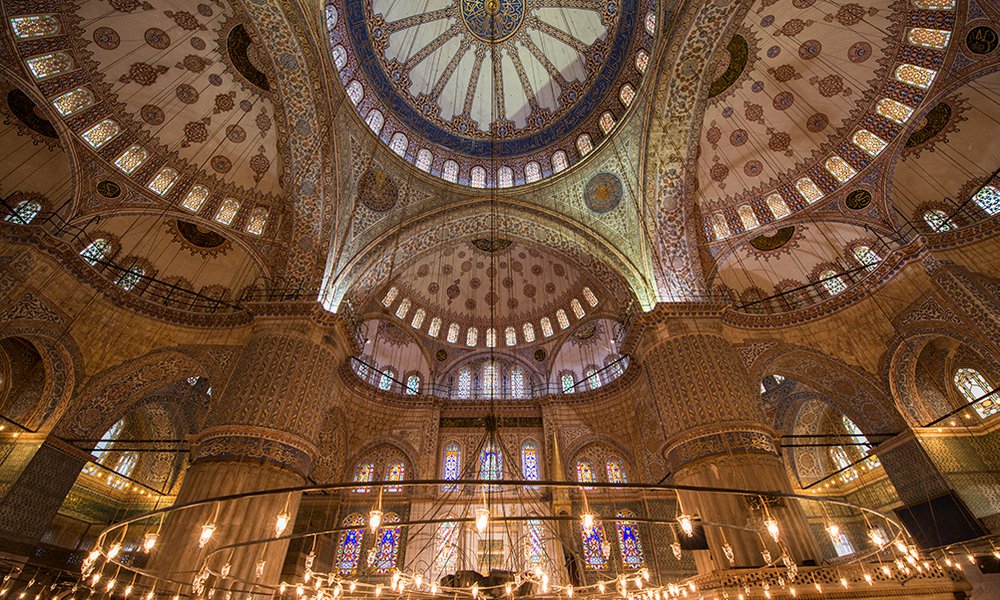The impact of China’s Terracotta Army on the dead and the living
by Professor Marcos Martinon-Torres and Dr Xiuzhen Janice Li & Professor Andrew Bevan
9 Mar 2018
What drives artists’ recurrent use of the human body as a model? From the hand stencils in cave walls and the figurines of steatopygic women of the Ice Age, the representation of the human body is inextricably intertwined with the history of art. Why is that the case? What do those representations say about artists, patrons and common people in the past, but also about the modern observer?
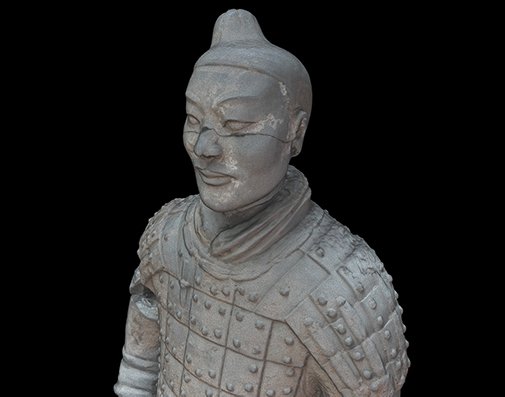
3D model of warrior. Credit: Imperial Logistics Project
Art can tell us about the past, but also about ourselves
In the second episode of BBC’s Civilisations, Mary Beard, OBE, FBA, takes us on a grand tour of some of the most iconic representations of humans in art history, from the Olmec of Mexico through the more familiar sculptures of Ancient Egypt, Greece and Rome, and including an excursion to China’s Terracotta Army. The journey, enriched by theatrical footage and equally dramatic narration, is a fascinating popularisation of the power of comparative art history, and it leaves us with some inspiring thought: that these images say much about those who commissioned, sculpted, and engaged with them in the past, but that they may also tell us something about ourselves. The motionless figures of the human body are, she reminds us, ”active”. They play roles variously as assertions of power, as moralising tokens, or even as playful challenges to established values – and hence we are compelled to engage with them, in the past as in the present.
The Terracotta Army was not meant for the eyes of the living
Of the many interesting sculptures discussed in the film, the hundreds of ceramic warriors stationed at the mausoleum of China’s first emperor stand out for several reasons. First, the Terracotta Army is, as she puts it, “quite simply the biggest tableau of sculpture made anywhere in the planet, ever”. Secondly, and even more importantly, these figures were not meant to be seen by the eyes of this world.
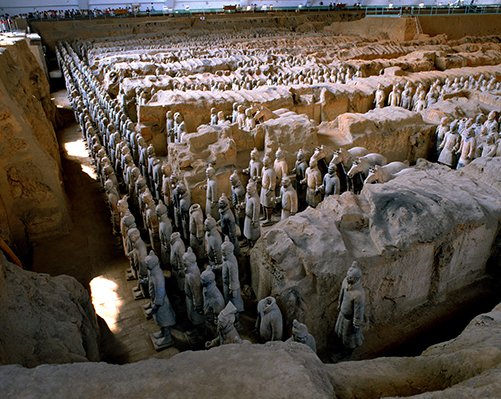
Terracotta Army. Credit: Xia Juxian
Millions of modern-day visitors to the Terracotta Army take in the unforgettable, slightly eerie experience of standing in front of Pit 1, facing the warriors in battle formation, feeling like an underworld general checking on his army. As we do that, we should not forget that, for 2,200 years since the army was built until it was rediscovered, excavated, and restored, no-one ever saw the whole assembly of warriors in the way we do today.
Quite paradoxically, these extraordinary terracotta men took the human body as a model but were never exhibited to men and women of flesh and bone. Archaeological excavations have shown that the long corridors packed with soldiers, officers, charioteers and generals were covered by heavy roofs and buried below the ground level. The army might have been expected to play a very active role in the afterlife, should any of the first emperor’s enemies return to seek justice… but what about the world of the living? What impact might this seemingly inert army have among Qin commoners who would never come to face it?
An extraordinary display of power
To approach this question, it may be appropriate to consider the context where the army, and the mausoleum at large, were created – namely, the birth of the largest empire the world had ever seen. Commissioned by a government that no doubt struggled to assert its power over the innumerable ethnic groups, ecosystems, political entities, religions, languages, scripts and customs that stretched across millions of square kilometres, the construction of the mausoleum must have acted as a great work of propaganda, an extraordinary display of the strength of a central ruler with the power to mobilise all the materials, people and knowledge necessary to create something of this scale and splendour.
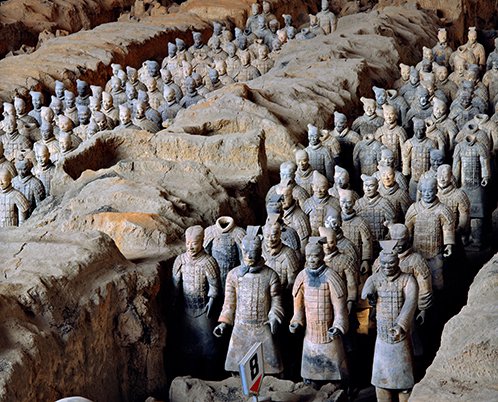
View of Pit 1. Credit: Xia Juxian
From this perspective, this act of conspicuous consumption by the Qin court must have made an even stronger impact on the living than the finished product we admire today. News of this unprecedented “work in progress” must have reverberated across Qin China, adding a very desirable mystique to the public perception of their sovereign. In this sense, even if hardly visible, the Terracotta Army was built for the living too, and its message and impact are not just about the afterlife.
Reverse engineering the Terracotta Army
Our British Academy Research Project “Imperial Logistics: The Making of the Terracotta Army” is set against this background. Using the tools of modern archaeological science, we are reverse engineering the Terracotta Army, and the broader mausoleum, as a starting point to understand broader strategies employed to control people, resources and ideas in the context of this emerging empire.
Rather than looking at this mass-produced form of art as a frozen, finished entity, we are trying to unveil the microcosms of artists, artisans and unskilled labourers that worked at the site, hoping that this will reveal something about the broader imperial macrocosm. In essence, we are hoping these ceramic men will tell us something about other men and women. For this purpose we have carried out detailed analyses of the makers’ and other marks left on the warriors, some initial petrographic examination of ceramics, morphometric and chemical analyses of the hundreds of weapons that armed the warriors, and of the inscriptions on some of them. We have also begun to develop a form of science-based Morellian approach to the identification of artists based on their work, using digital 3D models of the warriors.
Centralised power, decentralised organisation
A key discovery of our project has been that, rather than being organised in a single, very large and centralised factory arranged as an assembly chain divided in specialised units, the workforce responsible for the Terracotta Army appears to have worked in smaller and more versatile production units or cells. Most likely, several such workshops operated in parallel, each probably under the supervision of a foreman, delivering batches of finished, individually crafted warriors to the site before they were moved down into the pits where we find them today. This organisation would have contributed to the adaptability and efficiency of the whole enterprise.
For an emperor who would be remembered for his centralising efforts, this seemingly decentralised logistical organisation might seem counterintuitive at first. However, beneath the surface, this arrangement may echo some organisational principles that were perhaps familiar to those working at the site. We know that the early Qin bureaucracy forced the registration of the entire population, and its organisation into mutual responsibility groups that were punished or rewarded based on their services to the state. Might the construction of the mausoleum be a reflection of the same organisational policies that supported the emergence of the empire?
Lessons from art history and archaeology
Professor Beard’s take on art history is a captivating reflection of how sculpted human bodies acted upon those who saw them, and indeed on how our modern engagement with ancient artwork may say more about our own biases, weaknesses and preconceptions than we might be prepared to admit.
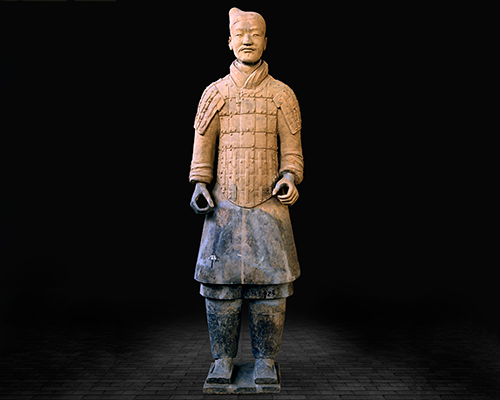
Terracotta Warrior. Credit: Xia Juxian
The picture gets even more complex, and richer, if we consider the role of artwork that was not created for the eyes of the living, and indeed our daring intrusion when we exhibit this artwork in the present. Our comprehension also gains much if we bring into perspective the tools, skills and actions that brought those life-like creations to life.
From this perspective, the Terracotta Army encapsulates a fascinating conundrum: these figures were modelled on human bodies and built by humans, but not made for humans to see; although hidden from sight, they sent an important message to the people of the time; today we interrogate the warriors for information about those very people, but they also offer lessons about logistical organisation that are relevant to the present. We certainly concur with Professor Beard that these figures are “active” and hasten to add that it is archaeology that springs them into full action.
Professor Marcos Martinon-Torres is a Professor of Archaeological Science at the UCL Institute of Archaeology. Dr Xiuzhen Janice Li is a senior archaeologist at the Emperor Qin Shihuang’s Mausoleum Site Museum, China, and an Honorary Senior Research Associate at University College London, UK. Professor Andrew Bevan is a Professor at the UCL Institute of Archaeology. Their research project, ‘Imperial Logistics: The Making of the Terracotta Army’ is a British Academy Research Project.
